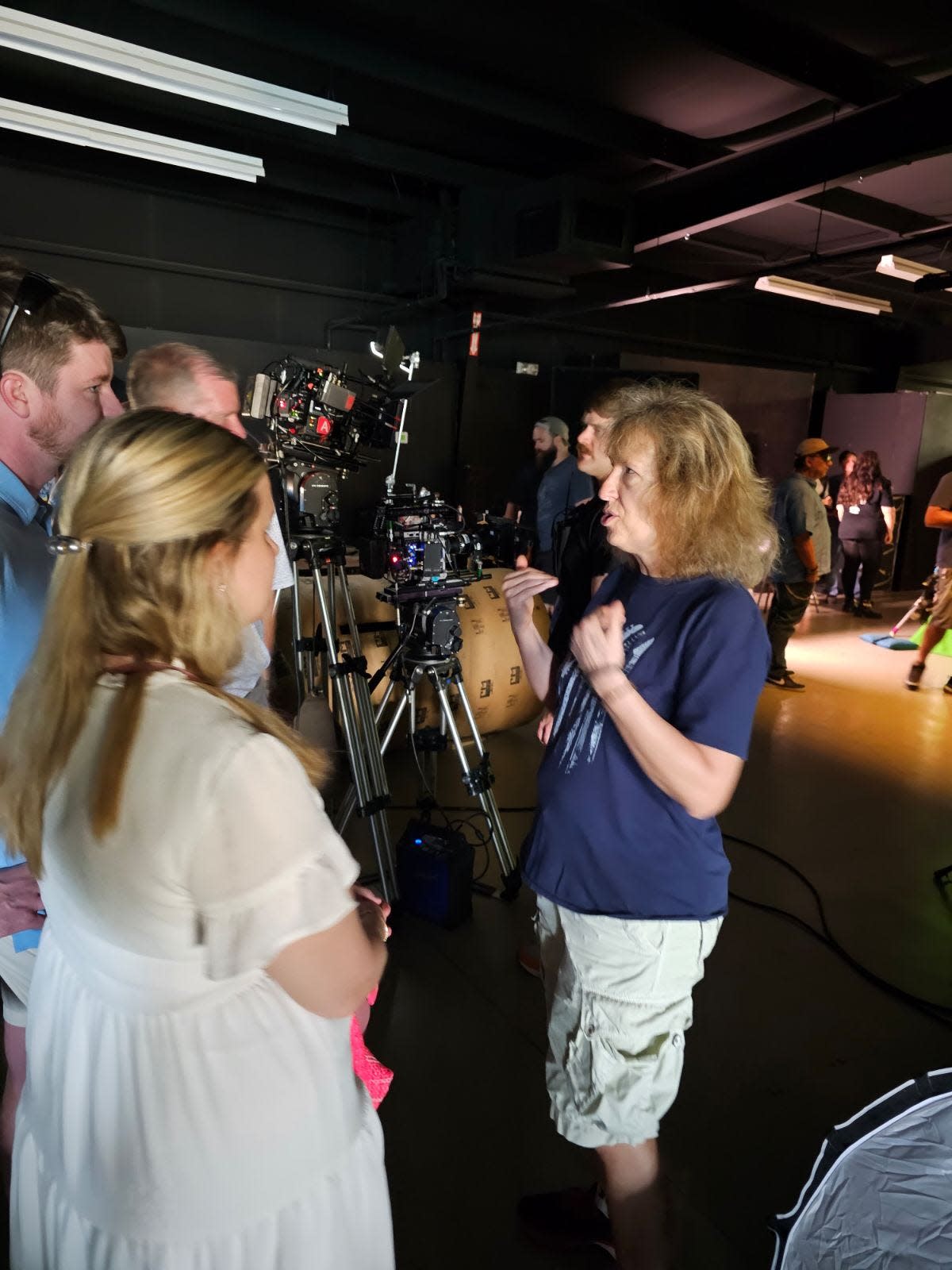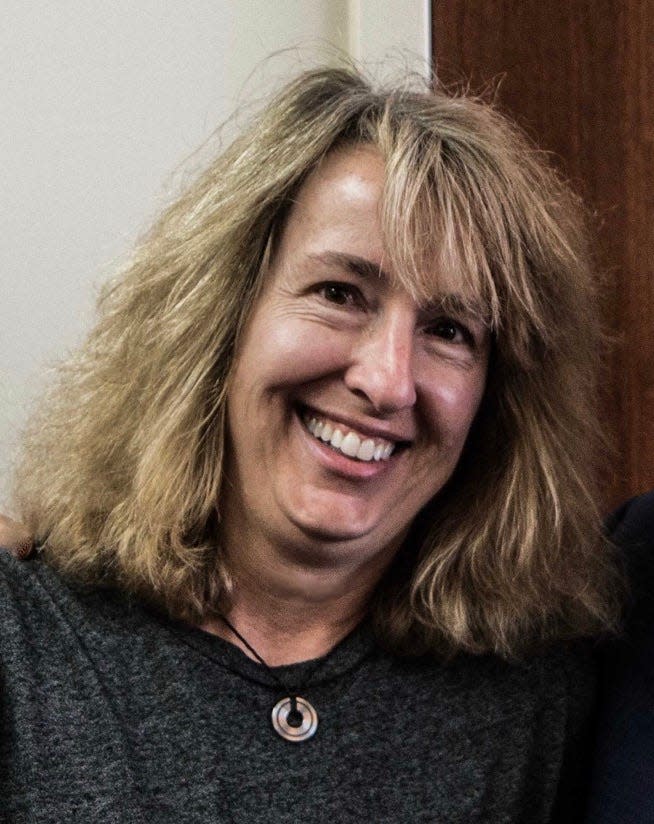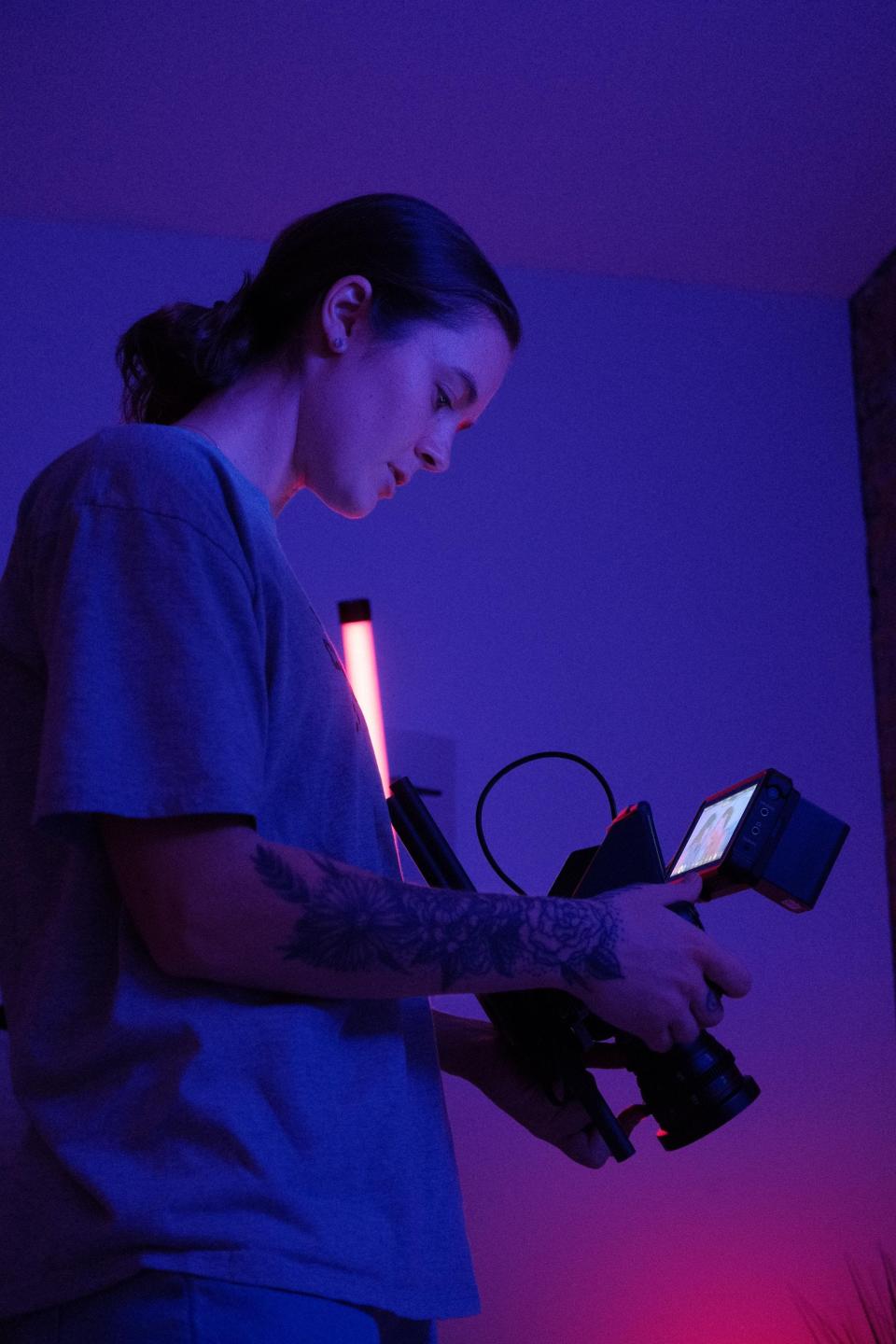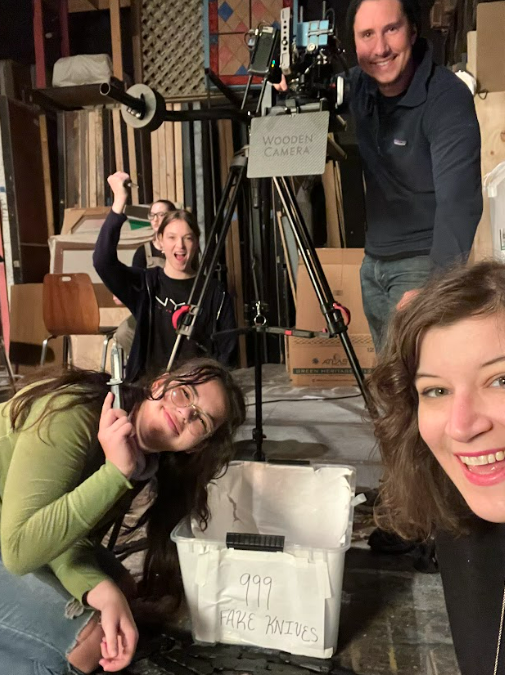Here's how filmmakers hope to tap into Missouri's new production tax credit

A Jefferson City native, Gina Goff is looking forward to "coming home" to produce her 15th movie this summer.
In August, Goff, founder of film and television production company Goff Productions, is returning to mid-Missouri to film "At Niangua's End" at Lake of the Ozarks. Though the crime thriller is set on the Missouri reservoir, one of the main reasons Goff is interested in producing the project at the Lake is because of the SHOW MO ACT Motion Media Production Tax Credit Program.
Enacted in 2023, the purpose of the Motion Media Production Tax Credit Program is to recruit production teams to film and edit projects in the state of Missouri for a financial incentive. Eligible projects may receive a tax credit between 20-42%, and production teams will receive this money back following project completion.
Speaking with the News-Leader in April, Goff said she anticipates "At Niangua's End" to cost about $6 million and hopes to receive about $2.2. million back from the tax credit. Goff and her team will be informed of the total dollar amount once the film is complete and the Missouri Film Office has conducted an audit of the project.
Goff described Missouri's program as "competitive" in comparison to other states that have had robust programs for several years. For example, Georgia's program (established in 2005) offers a tax credit up to 30% and New Mexico's (established in 2002) offers up to 40%.
The last time a production tax credit existed in Missouri was between 1999 and 2013, which has meant that several projects featuring stories based in Missouri benefitted from working elsewhere. A popular example is the Netflix series "Ozark," a drama about a Midwest family working for a Mexican drug cartel. Set at Lake of the Ozarks, the four-season series was mostly filmed in Georgia.
More: These 16 television shows, movies are set in Missouri — but were they filmed here?
The Missouri Film Office received two film applications for 2023, and according to Andrea Sporcic Klund of the Missouri Film Office and Missouri Division of Tourism, four film projects and two episodic projects were approved for 2024. Filming for these projects will take place in Kansas City, St. Louis and the Lake of the Ozarks.
In March, the film office announced the first film to receive funding from the tax credit, "On Fire." The St. Louis-based production received $6.9 million from the credit and employed 550 Missourians, according to the Missouri Film Office.
The importance of regional filmmaking
"At Niangua's End" is a feature-length film based on a 14-minute short created by Bo Shore and Chase Elliot in 2022. The story follows two brothers who begin to uncover the mysterious circumstances surrounding their father's suspicious death. One of the brothers ends up as the prime suspect and is forced to hide away from his community.
Goff learned about Shore and Elliot's short when a Facebook friend tagged her on a post that promoted the project. She watched the short and enjoyed what she saw.
"I reached out to them (Shore and Elliot) and just said, 'Hey, congratulations. I think you did an excellent job. It's great to see something actually shot in Missouri, and if I can ever do anything to help, let me know,'" Goff recalled. "And then they reached out to me and said, 'Hey, would you get on a Zoom call?'"
From there, the trio began discussing what it would take to make that 14-minute short into a feature. Shore and Elliot already had written a feature-length script and Goff was ready to help.

"I've always wanted to find a reason to come home and make a movie," Goff said. "It's just never made any financial sense without having the tax credits in place."
When Goff decided to take on "At Niangua's End" as a producer, Missouri's Motion Media Production Tax Credit Program wasn't yet passed. At the time, she thought she would try to raise half the film's money through sponsorship credits and the other half through independent film investors. But when the tax credit passed, Goff was relieved.
In addition to Shore and Elliot, who will work both behind and in front of the camera (Shore acts as one of the brothers in the short and will in the feature, too), the production team is looking to hire as much of the film's cast and crew from Missouri as possible.
Though the baseline of the tax credit is 20%, production teams can accrue additional tax credit if they are eligible, such as where the project is produced in the state, how many Missouri residents are working on the project and how the project portrays the state overall.
If at least three departments of a production hire a Missouri resident ready to advance to the next level in a specialized department, the project will receive an additional 5% tax credit. For example, if a Missouri resident had previously worked as an art department production assistant and was hired as an art department coordinator, this would count for one of the three required departments.
In addition to local cast and crew, Goff said she is hoping to work with more popularly-recognized celebrities from Missouri.
"Even as far as getting the bigger acting names that we'll need in the movie in order for it to be a financeable movie and get the investor's money back, we're going after actors like Jon Hamm, who's originally from St. Louis and actors like John Goodman," who attended Missouri State University in Springfield, Goff said.
Film producer and consultant John Crye has been working in Los Angeles for more than 20 years. He recently joined forces with filmmakers Rebecca Holopter and Verity Butler to help produce their film, "Big Mike's Cabin." The feature tells the story of two 40-year-old women reconnecting during a trip to the Ozarks and will be filmed entirely in the region.
More: Springfield native looks forward to highlighting Ozarks in feature film 'Big Mike's Cabin'
Originally from Memphis, Tennessee, Crye, like Goff, is looking forward to producing a film in the Midwest. Over the years, he has largely worked on projects on the West Coast, including Christopher Nolan's "Memento" and "The Prestige" and Richard Kelly's "Donnie Darko."
"The line between what is made in Hollywood and what is made elsewhere is getting really, really blurry," Crye said of the filmmaking industry. "Almost everything that everybody watches these days isn't shot in Los Angeles and it isn't really made with 'Hollywood money.'"
In addition to shedding light on regional communities, Crye said production tax credits like the program in Missouri provide him with a new sense of hope for the industry.

"Incentive programs like this ensure that people are going to keep working and for people like me, somebody who really cares about this business and the art itself, it makes all of that richer," Crye said. "It provides so many more opportunities and it brings talented people into this business that may not have otherwise been here and we all benefit from that."
Holopter, Butler and Crye haven't applied for the tax credit yet, but they plan to. Crye told the News-Leader that "Big Mike's Cabin" appears to qualify for about 40% of the tax credit "on paper."
Tax credit benefits smaller projects, too
In addition to multi-million dollar projects like "At Niangua's End," the tax credit is enticing for smaller productions.
"I think a lot of independent films just wouldn't be made at all if it weren't for these programs," Crye said.
Hailey Brown, a dramatic writing graduate student at Missouri State, is in the middle of producing her first feature-length film, "Don't." The film follows two women who have been separated and are reliving their past relationship. She is interested in applying for the tax credit to help finance the project.

Brown told the News-Leader that the minimum budget for "Don't" is $35,000, but the team is actively looking for investors.
One of the aspects of the Missouri tax credit that Brown likes is that the credit can be transferred if the original benefactor is unable to use it. For example, if Brown received the tax credit for "Don't" and found herself unable to complete the project, she could transfer the credit to another production team.
How will the tax credit affect Missouri's economy?
Larissa Zageris is also a dramatic screenwriting graduate student at Missouri State. Right now, she is looking for individuals to invest in one of three scripts, including a short horror comedy, a comedic feature and an Ozarks-centric thriller feature. Following her graduation in May, Zageris is moving to New York, but she would like to return to Springfield to produce one of these three projects, taking advantage of the tax credit.

For Zageris, the newly-enacted production tax credit was "long overdue," and she is excited to see how it benefits smaller projects and communities.
"A film production, if it's big enough, it's a mini city, but at the very least it's a summer camp, where money will be spent on food, talent, clothing, lodging. It's basically like having a mini industry in one production, whether that's a short, feature film or TV series," Zageris said. "It brings a lot of money to wherever it may be, even if it's a small budget (project)."
What are the qualifications for the Motion Media Production Tax Credit Program?
Before assessing whether a project is eligible for the tax credit, the applicant must meet the following requirements:
Be a production company that has registered as a Missouri taxpayer;
Be registered with the Missouri Secretary of State to conduct business in Missouri;
Have a Missouri Tax ID Number;
Not be delinquent in taxes owned by the State of Missouri; and
Complete necessary paperwork provided by the Missouri Film Office.
As far as eligible projects, the following may receive a tax credit: Narrative or documentary features or series, commercials, video games, webisodes, music videos, content-based mobile applications, virtual and augmented realities, standalone visual effects and postproduction for motion media projects, according to the Missouri Department of Economic Development.
News and current events programming, talk shows, productions primarily for industrial, corporate or institutional use, live sport programming, gala and awards shows, infomercials, political ads, and productions that contain obscenity are not eligible.
To meet Missouri's 20% tax credit baseline, projects under 30 minutes/pages must expect to spend more than $50,000 and projects more than 30 minutes/pages must be expected to spend more than $100,000.
The additional 22% in tax credit can be accrued by meeting the following eligibility requirements:
2%: If the production office is located in a country of the second, third or fourth class according to the Class Classification System;
5%: If at least 15% of the project is filmed in rural or blighted areas in Missouri;
5% If at least 50% of the project is filmed in Missouri;
5%: If at least three departments of a production hire a Missouri resident ready to advance to the next level in a specialized department;
5%: If the project's script positively markets a city or region in Missouri, the entire state or a tourist attraction and the project provides at least five high-resolution photos featuring cast members working.
Greta Cross is the trending topics reporter for the Springfield News-Leader. Follow her on X and Instagram @gretacrossphoto. Story idea? Email her at gcross@gannett.com.
This article originally appeared on Springfield News-Leader: Missouri filmmakers eager to see state's new production tax credit

